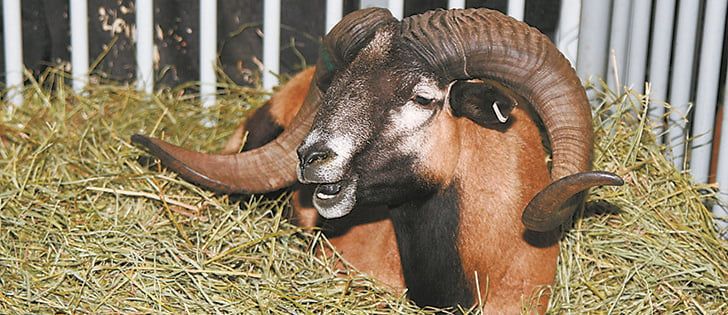Pedigreed rare breed | The animals are low maintenance and don’t require shearing
Doug and Tina Noyes had a serious weed problem in pastures and coulees when they took over the family farm at Innisfail, Alta., in 2005.
The Noyeses decided they would use sheep to clear away a potential fire hazard of overgrown weeds and buckbrush.
They chose American Blackbelly sheep partly because they are interested in pedigreed rare breeds.
They also wanted a hair sheep because they both work off the farm and did not want the added work of shearing.
“We decided to get sheep because they are low maintenance and they are good for pasture rejuvenation,” said Doug, who had the dark coloured horned sheep on display at the Calgary Stampede.
Read Also

Manitoba extends Crown land rent freeze
Manitoba government links the continued rental rate freeze on grazing and forage leases to economic and environmental challenges facing the industry
There are only 1,600 pedigreed stock in the North American registry, so it took some work to find animals and move them to their 112 year old farm named Rusty Iron Acres. They found some in Canada and imported rams from California.
Doug is a hunter and was attracted to the curving horns. The breed registry says horns must be symmetrical, but shapes include tight horn curls, large horns that sweep out and curve behind the neck, heart- shaped horns and horns that sweep outward in a spiral.
Some hunt farms in the United States allow clients to hunt these sheep for trophies.
Lambs that are not good enough to make it as breeding animals are processed locally and sold at a meat shop in Red Deer. The average weight for a mature ewe is 75 to 95 pounds, while the average weight of a mature ram is 110 to 140 lb.
“If you are looking for the big commercial carcasses and fast growing lambs, it just wouldn’t be your choice.”
The breed is a cross between Mouflon and Barbados Blackbelly. They have brown hair coats with black bellies.
The horns were developed through selected breeding, although the females can be horned or polled.
They can be bred every seven months, which has allowed Doug to build up the flock to 40 ewes.
The plan is to put together small breeding flocks for other producers.
















